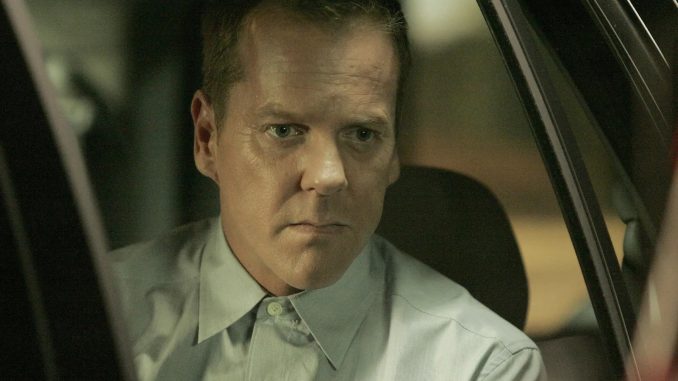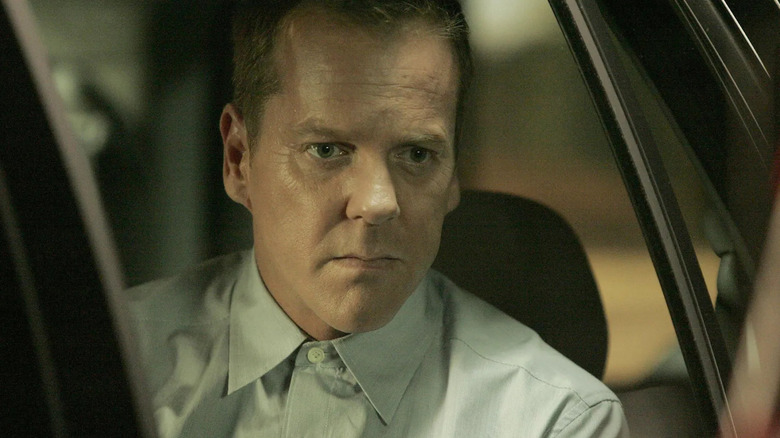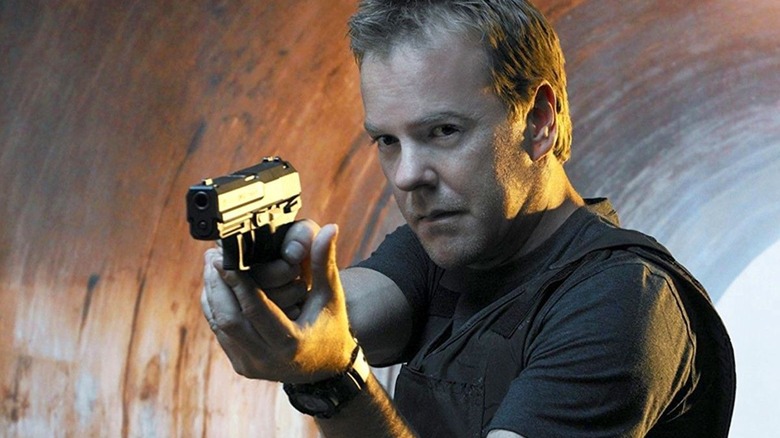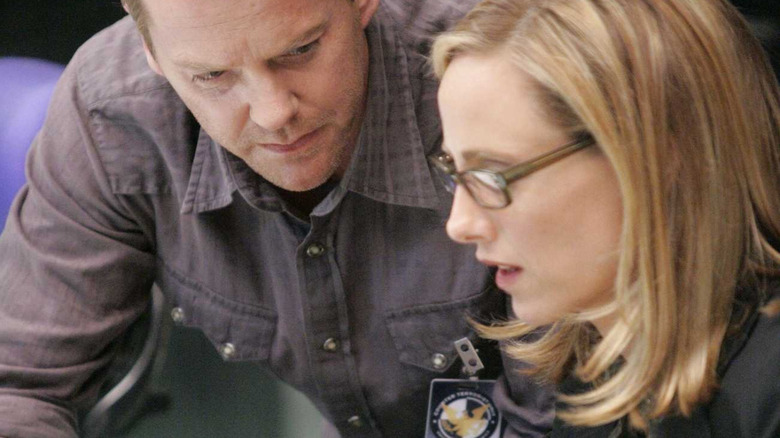
Joel Surnow’s and Robert Cochran’s espionage series “24” debuted on November 6, 2001, and boy howdy was American ready for it. “24” followed the travails and missions of a special law enforcement agency called the Counter-Terrorist Unit and focused primarily on its ethics-optional star agent Jack Bauer (Kiefer Sutherland). Every season of “24” revealed that evil international terrorists had secured some kind of doomsday device (a nuclear bomb, a deadly virus, canisters of nerve gas) and Jack Bauer had to run around Los Angeles locating baddies, torturing them for information, and kicking in whatever heads needed kicking.
The show took off in popularity, largely because it matched the politics of the time. It debuted only a month after 9/11, and the “get the terrorists” rhetoric of the George W. Bush administration was already proliferating into entertainment. Americans had a lot of militant anger, and TV violence took on a darker edge. “24” was maybe the purest example of the way pop action adapted to a post-9/11 world.
The central gimmick of “24,” however, was that it took place in real-time. Before ad breaks, the show would reveal its ticking clock on the screen to remind viewers that, yes, the last 15 minutes of screen time was also 15 minutes in the “24” world. And because TV seasons were 24 episodes in 2001, every season would last all night and wrap around to the following morning.
The immediacy of the series made it propulsive and addictive. It was also fascinating to watch Jack Bauer, already unhinged, become more dangerous as a season progressed. By the time 3 a.m. rolled around, Jack was exhausted and so were we.
“24” ran for six seasons, took a break to make a TV movie, ran two additional seasons, came back for a late-stage sequel season, and gave birth to a spinoff. Below is the entire “24” franchise in order:
The following list is presented in real time … er, chronological order
It’s worth pausing to note that much of the popularity of “24” was bolstered by a then-novel TV-on-DVD market. Studios had begun releasing whole seasons of TV in DVD box sets, allowing consumers to efficiently collect their favorite shows for the first time (VHS cassettes usually could only hold about 2.5 hours of high-quality tape, and were too bulky to sell whole shows on). DVDs changed that. Once a season concluded, audiences could purchase a portable box set and binge-watch the whole bloody thing in one sitting. The “real-time” conceit of “24” made it imminently bingeable. It also helped that people died all the time on “24.” If you thought “Game of Thrones” was a bloodbath, check out this W-era curio.
The best way to keep track of the seasons is by their date. There will also be in-universe changes to distinguish the seasons, which we’ll get into below. Here, then, are the seasons in broadcast order:
- Season 1 (2001)
- Season 2 (2002)
- Season 3 (2003)
- Season 4 (2005)
- Season 5 (2006)
- Season 6 (2007)
- Redemption (TV movie, 2008)
- Season 7 (2009)
- Season 8 (2010)
- 24: Live Another Day (2014)
- 24: Legacy (2017)
Although each season takes place over 24 hours, each season has a several-year break in between. Because the show involves international terrorism, the United States president is often a main character on the show, and nine (fictional) presidential administrations pass throughout the series. To keep them straight, here are the presidents, in order, as seen on “24”:
- David Palmer (Dennis Haysbert), seasons 2 and 3
- John Keeler (Geoff Pierson), seasons 3 and 4
- Charles Logan (Gregory Itzin), seasons 4 and 5
- Hal Gardner (Ray Wise), briefly in season 6
- Wayne Palmer (D.B. Woodside), season 6
- Noah Daniels (Powers Boothe), season 6, “Redemption”
- Allison Taylor (Cherry Jones), seasons 7 and 8
- Mitchell Hayworth (Cameron Daddo), season 8
- James Heller (William Devane), “Live Another Day”
The president isn’t a major character in season 1, or in “24: Legacy.”
The fast-forward chronology of 24
Because of the cycle of presidential administrations dramatized in the series, however, “24” followed a strange, time-jump-lousy chronology. Indeed, even the first season, which aired in 2001, was said to take place in the near future of 2002. As such, the actual mappable timeline of “24” is as follows:
- 2001’s Season 1 – March 2002
- 2002’s Season 2 – September 2003
- 2003’s Season 3 – September 2006
- 2005’s Season 4 – March 2008
- 2006’s Season 5 – September 2009
- 2007’s Season 6 – May 2011
- 2008’s Redemption – January 2015
- 2009’s Season 7 – March 2015
- 2010’s Season 8 – September 2016
- 2014’s Live Another Day – September 2020
- 2017’s Legacy – March 2024
So “24” is constantly pushing forward, typically taking place anywhere from one to seven years in the future, depending on the season. “Legacy,” it should be noted, did not star Sutherland as Jack Bauer.
Despite being inspired by the terrorist-forward language of the George W. Bush administration, “24” took place entirely in a fantasy world, wherein real-world violence rarely entered into the drama. Indeed, several countries were invented by the “24” writers so that no real-world nation would be held culpable for the on-screen acts of terrorism.
“24” has sort of outlived its cultural usefulness in the 2020s. It affected an irresponsible ethic, arguing that torture and violence were both effective and necessary ways to get information from people. And when the world was in danger, sometimes torture had to be done as swiftly as possible. The makers of “24” were, perhaps without intending to, serving as American propaganda.
Of course, on a dramatic level, propaganda can be exhilarating. Why do you think we keep falling for it?




Leave a Reply